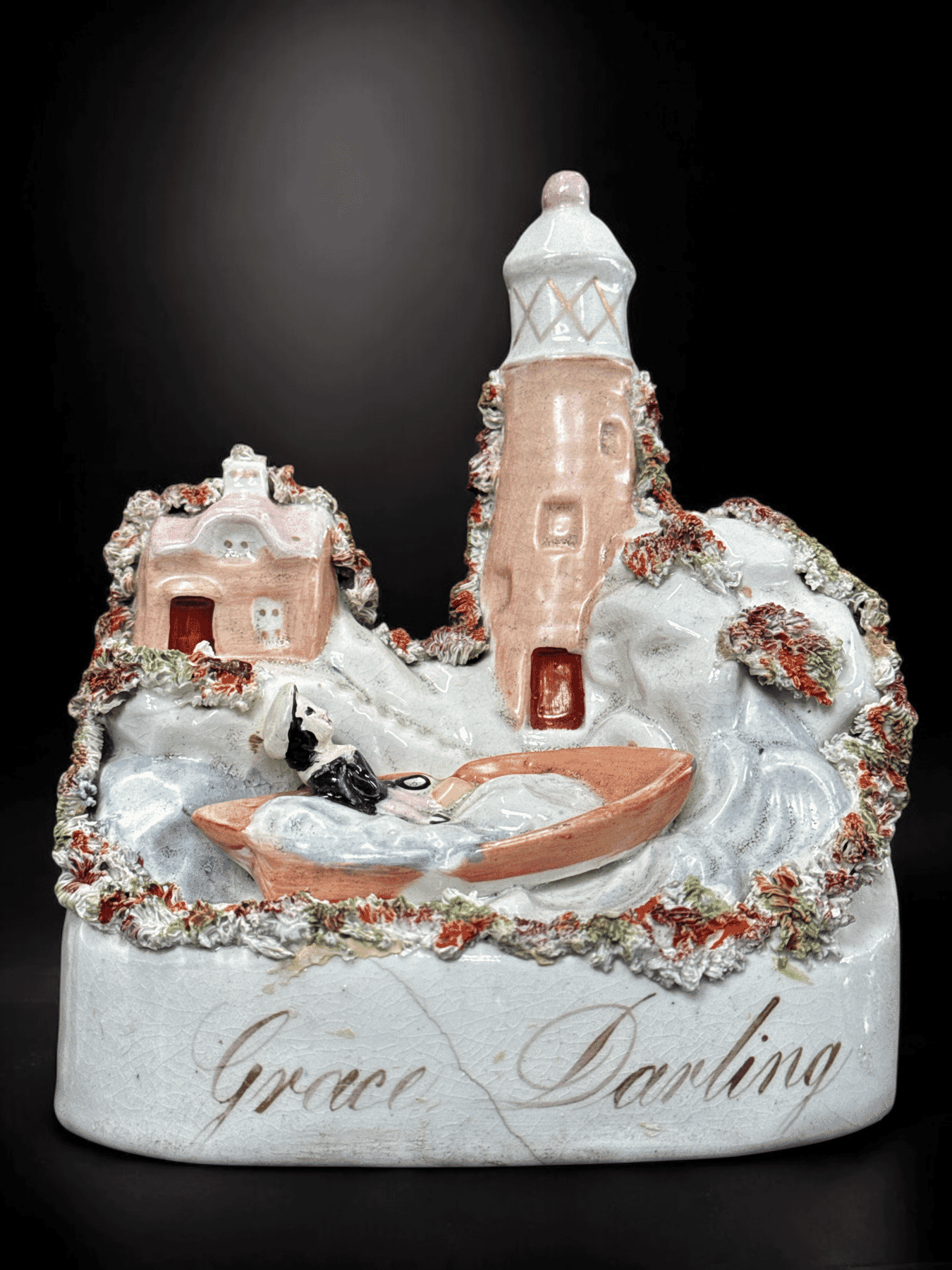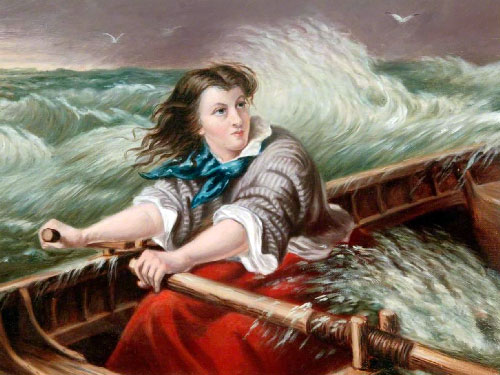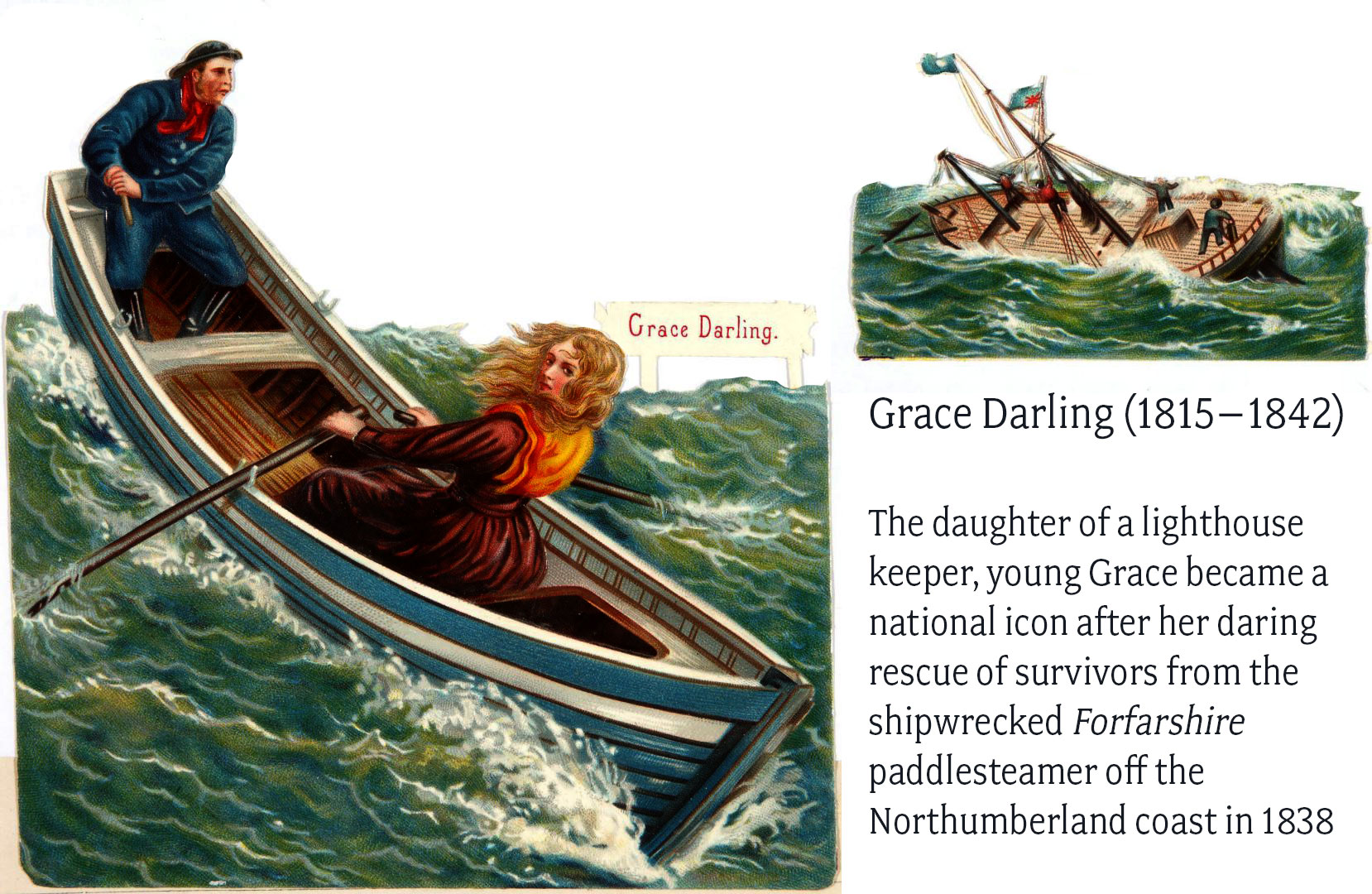
This charming Staffordshire figure commemorates one of the celebrated heroines of the Victorian age—Grace Darling (1815–1842). The daughter of a lighthouse keeper, Grace became a national icon after her daring rescue of survivors from the shipwrecked Forfarshire off the Northumberland coast in 1838. Braving fierce seas in a small rowing boat with her father, she helped save nine lives, against all odds. Just a few years later she died of tuberculosis.
Her youthful bravery captured the public’s imagination, inspiring poetry, paintings—and popular ceramic tributes like this figure.

Grace’s story epitomised Victorian ideals of courage and virtue, making her a popular subject for ‘mementos’ – including children’s books, several ballads with illustrations, and of course the Staffordshire potters were up with the trend, producing these charming figures for the domestic mantel shelf.

There’s probably a print with the scene depicted, as yet not identified.

What makes this example unique is…. she’s alone her boat! Her father should be in there with her, seated opposite. In this case there is a white-glazed area, which closer examination shows to be a pair of legs and nothing else! It looks like the wave that has almost swamped the small lifeboat the brave girl is rowing has swept her father away, leaving only his trousers!
What has happened is a firing flaw in the factory – he’s come off in the initial firing – or the person responsible for placing him into the original clay moulded blank has missed this small additional moulded piece – so that when it came to be glazed, it was simply smoothed over and glazed, and never painted.
Surely a unique example of a rare figure type!
